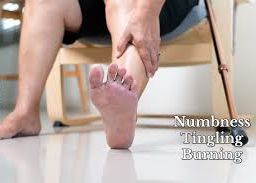
Transforming Healthcare: Telemedicine Benefits and Convenience
In the era of advanced connectivity, telemedicine has emerged as a transformative force in healthcare. This digital frontier allows for the remote delivery of medical services, breaking down geographical barriers and significantly enhancing access to essential healthcare resources. In this exploration, we delve into the profound benefits that telemedicine brings to both patients and healthcare providers, revolutionizing the way we approach and experience medical care.

The advent of telemedicine has brought revolutionary changes to the healthcare landscape and has therefore gained immense popularity and importance in recent years.
Breaking Down Barriers and Increasing Access:
Telemedicine plays a vital role in overcoming geographical barriers and increasing access to healthcare. For individuals residing in rural or remote areas, accessing specialized medical care can be challenging. Virtual medicine bridges this gap by enabling virtual consultations, allowing patients to connect with healthcare professionals regardless of their location. This expanded access to medical expertise ensures that patients receive timely and appropriate care, improving health outcomes.

The Mechanics of Telemedicine:
Virtual medicine relies on various digital platforms, such as video conferencing, secure messaging, and remote monitoring technologies. Patients can connect with healthcare providers using their smartphones, tablets, or computers, creating a virtual consultation environment. Through these platforms, patients can discuss their symptoms, receive medical advice, undergo remote examinations, and even receive electronic prescriptions.
Prerequisites for Successful Telemedicine Implementation
To participate in telemedicine, patients typically need the following:
1. Internet Access and Device: A reliable internet connection is essential for telemedicine consultations. Patients should have access to a computer, laptop, tablet, or smartphone with audio and video capabilities. These devices allow patients to connect with healthcare providers virtually.
2. Telecommunication Software or Application: Patients may need to download a telecommunication software or mobile application recommended by their healthcare provider or healthcare organization. These platforms facilitate secure video calls or messaging for telemedicine consultations.
3. Personal Health Information: Patients should have their personal health information readily available, including medical history, current medications, allergies, and any relevant test results. Sharing this information with the healthcare provider ensures a comprehensive and accurate assessment during the telemedicine consultation.

4. Relevant Medical Devices or Tools: Depending on the nature of the medical consultation, patients may require specific devices or tools. For example, individuals with chronic conditions might need a blood pressure monitor, thermometer, glucometer, or wearable devices to track vital signs. Having these devices readily available during the telemedicine session enables remote monitoring and accurate assessments.
5. Digital Health Records or Medical Documents: Patients may need to provide digital copies or access to their medical records, previous test results, imaging reports, or specialist referrals. Sharing these documents electronically before or during the telemedicine consultation helps healthcare providers make informed decisions and provide appropriate care.
6. Private and Quiet Environment: Patients should choose a private and quiet location for their virtual consultation to ensure confidentiality and effective communication with the healthcare provider. This environment allows patients to discuss their health concerns openly without distractions.

7. Insurance Information: Patients may need to provide their health insurance information, including policy numbers and relevant identification cards, to facilitate the processing of insurance claims or coverage verification.
8. Familiarity with Technology: Basic familiarity with using technology, such as navigating software applications, joining video calls, and accessing digital documents, is beneficial for patients participating in telemedicine. If needed, healthcare providers or support staff can offer guidance or technical assistance.
It is important to note that specific requirements for telemedicine participation may vary based on the healthcare provider, healthcare organization, and the nature of the medical consultation. Patients should follow any instructions or guidelines provided by their healthcare provider to ensure a smooth telemedicine experience.
The Benefits of Telemedicine:
Virtual medicine offers an array of benefits for both patients and healthcare providers:
a. Improved Access and Convenience: Virtual medicine eliminates the need for travel, reduces waiting times, and allows patients to access medical care from the comfort of their homes. This convenience is particularly beneficial for those with limited mobility, chronic illnesses, or in need of routine follow-up visits.
b. Cost Savings: Virtual medicine can significantly reduce healthcare costs by eliminating travel expenses, reducing hospital readmissions, and preventing unnecessary emergency room visits.
c. Continuity of Care: Virtual medicine allows for better continuity of care, as patients can connect with their regular healthcare providers remotely, ensuring ongoing monitoring and follow-up for chronic conditions or post-operative care.

d. Enhanced Collaboration and Consultation: Telemedicine facilitates collaboration among healthcare professionals, enabling remote consultations, second opinions, and knowledge sharing. This can lead to more accurate diagnoses, improved treatment plans, and ultimately, better patient outcomes.
e. Health Monitoring: Remote monitoring devices and wearable technologies enable healthcare providers to monitor patients’ vital signs, medication adherence, and disease progression. This proactive approach allows for early intervention and timely adjustments to treatment plans.
f. Reduced Healthcare Disparities: Telemedicine has the potential to address healthcare disparities by providing underserved populations with access to specialized care, reducing barriers related to distance, transportation, and language barriers.

It is important to note that specific requirements for telemedicine participation may vary based on the healthcare provider, healthcare organization, and the nature of the medical consultation. Patients should follow any instructions or guidelines provided by their healthcare provider to ensure a smooth telemedicine experience.
Disclaimer: The information provided in this content is for general informational purposes only. It is not intended as medical or healthcare advice, diagnosis, or treatment. Always seek the advice of a qualified healthcare professional with any questions you may have regarding a medical condition or healthcare decisions.
















